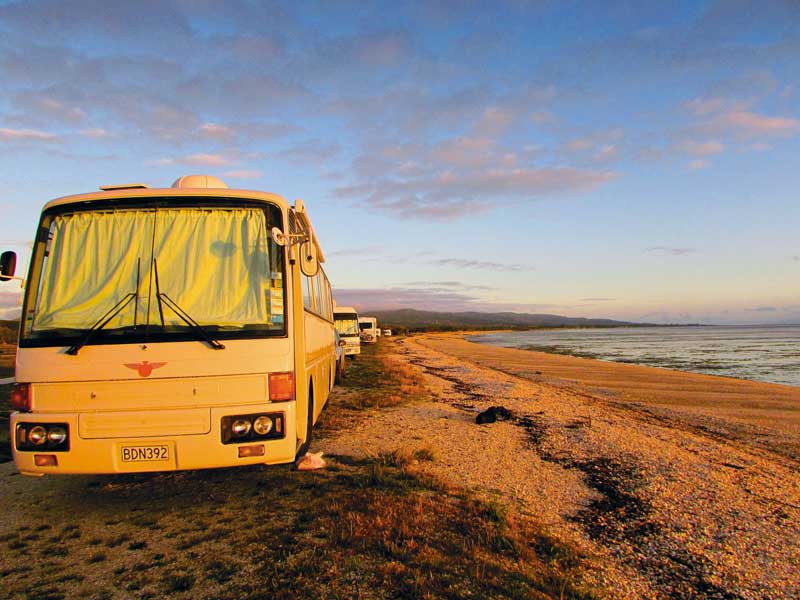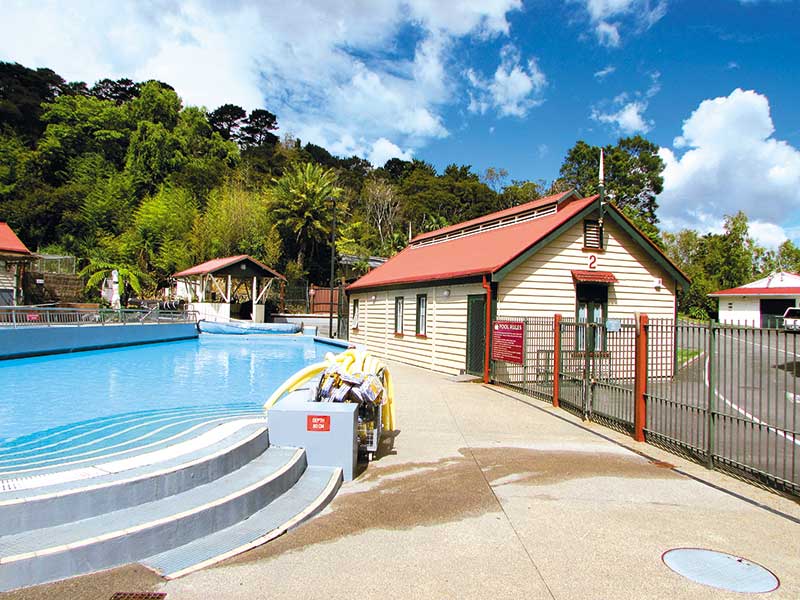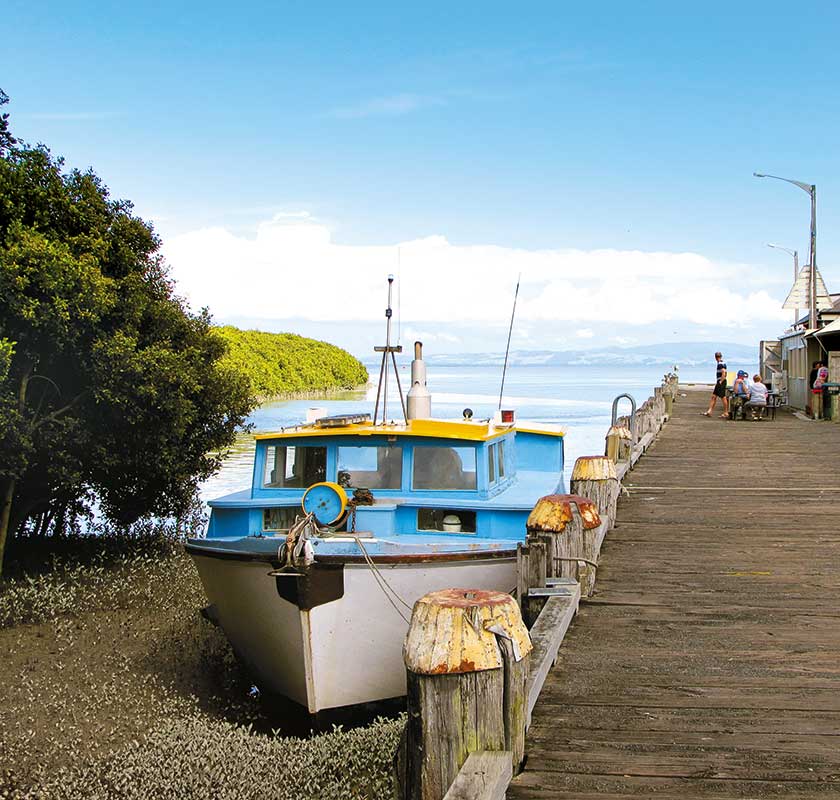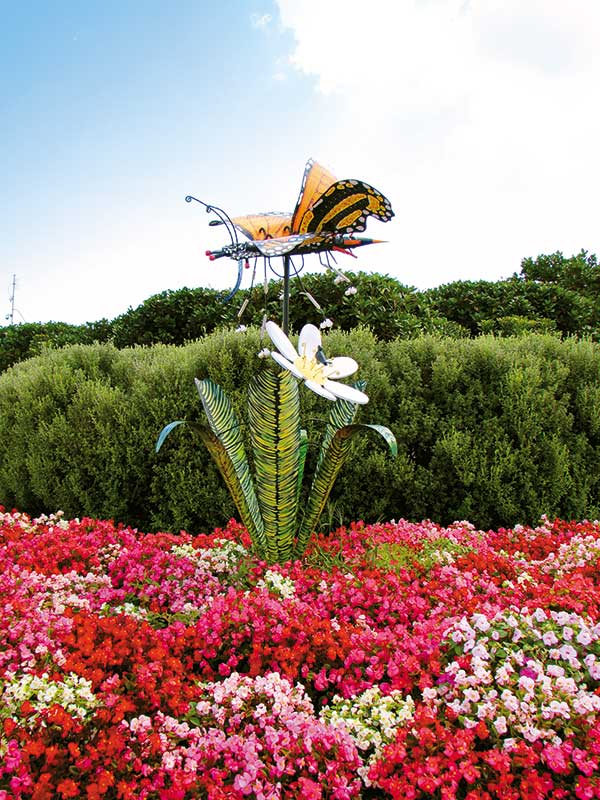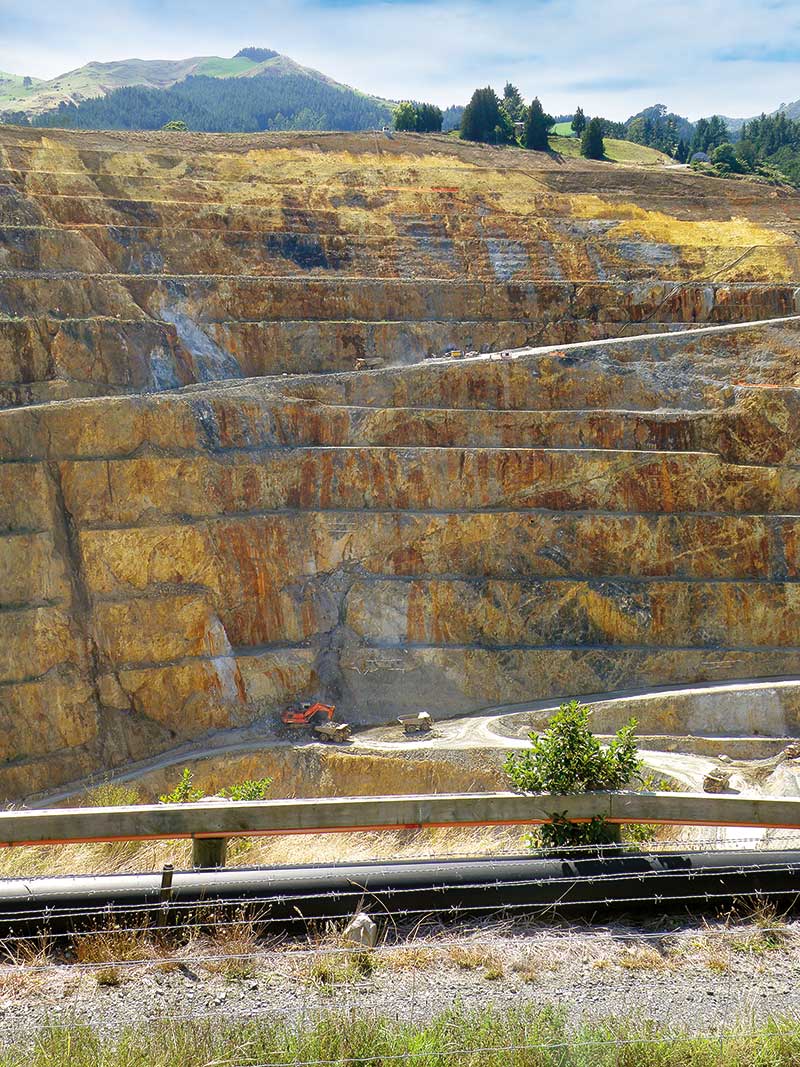Watching dawn break over the Coromandel Range from Ray’s Rest on the Firth of Thames was a great start to our Hauraki and Karangahake adventure.
It is a popular spot and it’s not hard to see why. At high tide the sea lapped a metre from our bus door, while at low tide the water retreated leaving a huge expanse of mudflats for the multitudes of seabirds to patrol. The wide views are ever-changing but the sense of peace is constant.
I can never visit the area without having a relaxing soak at Miranda Hot Springs. These are the southern hemisphere’s largest hot mineral pools, with a main pool and a sauna pool. In the past, the pool complex was part of the adjacent campground, now they are two separate businesses. Visitors to the Miranda Holiday Park can enjoy their own hot mineral pool.
Next on our itinerary was a stroll around the township of Thames at the base of the Coromandel Peninsula. Missionaries and traders began to settle in the Thames area from the 1830s but the township really took off as a gold mining centre in the 1860s.
Nearby is the start of the Hauraki Rail Trail which we had decided to cycle. Completed in 2012, this trail is flat and very easy to ride, following an historic rail corridor. The 33km from Thames to motorhome-friendly Paeroa took us less than three hours cycling, including an ice cream break at Hikutaia where the trail briefly intersects with the road.
Lemon & Paeroa has been drunk since the 1800s when locals added slices of lemon to the mineral spring that bubbled up in a cow paddock beside the town. It has been bottled since the early 20th century, though nowadays L&P is produced in Auckland.
Paeroa to Te Aroha is a short 22-kilometre cycle and, like the previous section of the trail, it passes through farmland with the Hauraki Plains stretching to one side and mountain ranges on the other. Te Aroha also welcomes motorhomes and we spent three days parked near the centre of town.
There are shops and cafes in the township but what really makes this little town interesting is the Hot Springs Domain. This park encompasses the most intact selection of Victorian and Edwardian spa buildings in New Zealand. ‘Taking the waters’ was all the rage in this era and visitors came to swim, soak in and drink the mineral waters. The Cadman Bathhouse was opened in 1898 and, now a museum, is the centrepiece of the domain.
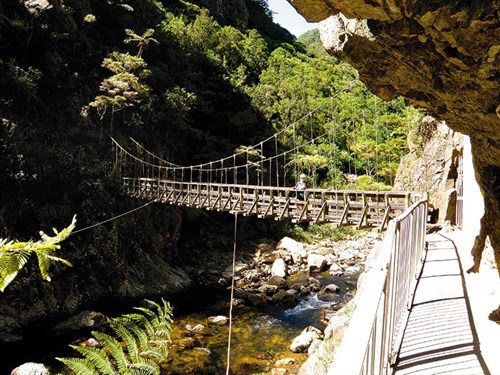
While we were at Te Aroha we walked some of the trails on Mount Te Aroha. The Whakapipi Lookout track passes the Mokena Geyser, New Zealand’s only hot soda water geyser. It spouts approximately every 40 minutes and though we did loiter about we didn’t actually see it in action.
Another interesting walk nearby goes to Wairere Falls, the highest waterfall in the North Island. This steep track winds through bush to a viewing platform, then on to the top of the falls. It takes about 90 minutes from the car park to the top where there is another viewing platform. From here the Hauraki Plains are spread below and – knowing Hobbiton is nearby – we couldn’t help feeling we were looking down into the Shire.
The final stage of the cycle trail is between Paeroa and Waihi. This section leaves behind the flat paddocks of the Hauraki Plains and passes through the dramatic scenery of the Karangahake Gorge. Gold was discovered here in 1875 and the mines soon became New Zealand’s second most productive.
Waihi is another town founded on gold. After the discovery of gold in 1878 the Martha Mine soon became one of the most important mines in the world. This huge open-cast mine can be seen just metres away from Waihi’s main street. There is a Pit Rim Walkway, a 4km track that circles this massive hole in the ground, but we just stood and gaped into the mine. It is only when you see the earth-moving machinery below that you realise how deep the pit is.
Beside the viewing area is Waihi’s icon, the Cornish Pumphouse, built in 1904 to pump water from the mines. After the advent of electricity the pumphouse fell into disrepair but was moved to its present site in 2006 to preserve and protect it.
We finished our Hauraki-Karangahake trip at Waihi Beach. Freedom-camped with the sea once again at our doorstep, we pondered on New Zealand’s unique geology and how in this small area it has thrown up gold seams and thermally heated water. These naturally occurring features led to settlement in the area and produced the towns and landscape we have been travelling through.
Beautiful scenery and pioneering history with hot pools thrown in for good measure. What could be better?
Read the full article in issue #133 of Motorhomes Caravans & Destinations magazine (on sale now!). Subscribe here.

